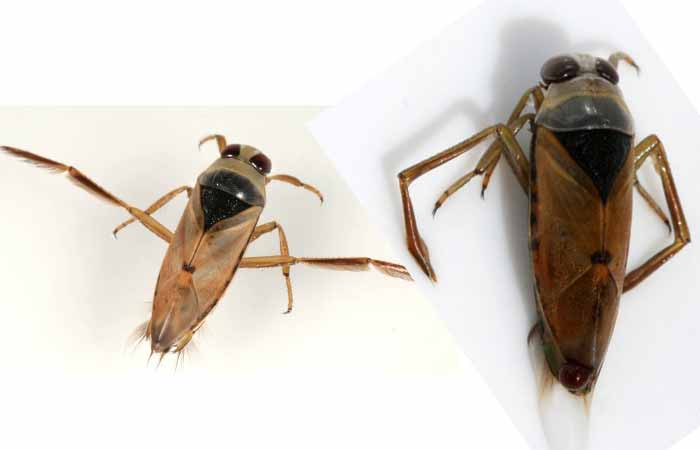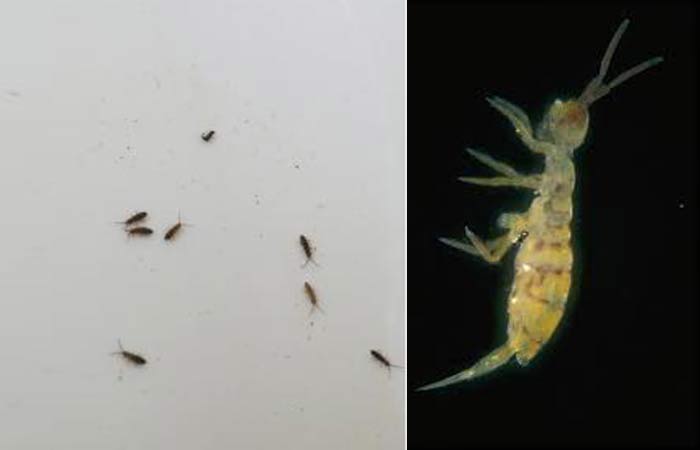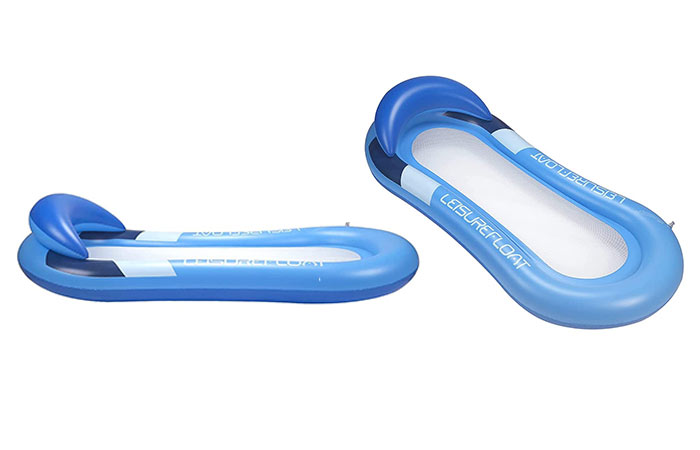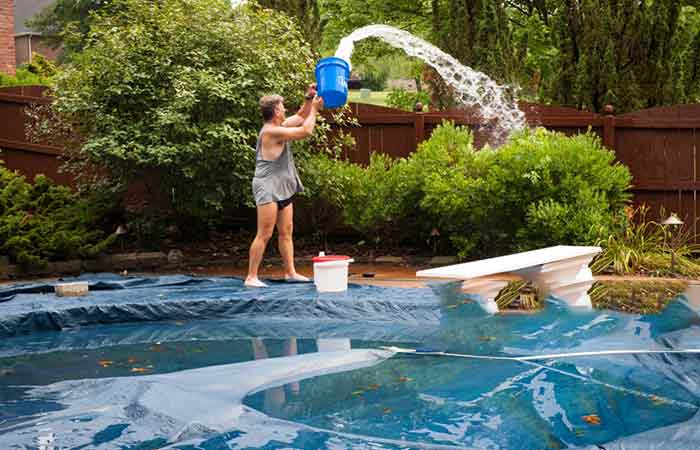How to Get Rid of Water Bugs in Pools
When the pool is left unattended, the chlorine levels subside, leaving the pool a conducive environment for insects such as waterbugs. They will invade the pool in search of food, either algae or other insects, they may even reproduce and increase in numbers.
The thought of this is not only unsightly but disgusting. You’d certainly not want to get into such a pool. There are six ways you can get rid of bugs in the pool including, chlorination of the water, skimming, vacuuming, brushing, pumping, and other DIY methods.
The amount of time and effort you will need to undertake the process will depend on the extent of the infestation. Following is a discussion on the types of bugs to look out for, methods to do away with these bugs as well as preventative measures to avoid pool insects in the future.
Why Keep Bugs out of Pools?
First and foremost, they’re unsightly. Seeing black or brown insects lying in the water can easily bore and irritate you.
Second, some of the bugs are a health hazard. They bite and these bites will lead to irritation and other bad conditions.
Third, they’re insects, therefore, they grow and reproduce quite fast turning your pool into a breeding ground. This may end up making your little ocean unusable. If you don’t stop their growth cycle, you’re looking at thousands of insects in such a short time. This in turn will lead to attracting more bugs which will be coming to prey on the existing bugs
Fourth, bugs are unhygienic. You don’t know what the bugs are carrying and you would want to find out, the best option is to clean and keep it clean.
Types of Water Bugs in Pools
There are two prevalent types of water bugs you would see in your pool.
- Water boatmen
- Backswimmers
- Spring Tails
Water Boatmen
These are slim bugs with an oval body, large eyes, and oar-like back legs that they use for swimming. They are brown to greenish-brown in color with a length of 0.5 inches. Also known as corixids, they have long rear legs that have hairs, which they use to float and paddle.

The legs extend forward towards their second set of legs leaving the back to push and glide while swimming. They also have wings for flying.
Their food sources are algae and mosquito larvae. You may not see the algae in the pool but if they are in your pool, there’s probably algae too.
Back Swimmers
Derived from their name, these 0.5 inches long bugs swim on their backs with their long oar-like legs. Their back legs are often longer than the other legs but fringed to help with skimming the water. They also have wings for flying.

Unlike the water boatmen, these light brown bugs are predatory insects that stride and skim on the surface of the water to feed off other insects including boatmen, hence carnivorous. Moreover, they can and do bite.
Springtails
These are tiny insects that have a size of between 0.25 to 6mm. A feature that make them outstanding is their tail-like appendage, or furcula, which folds beneath their abdomen. When disturbed, a this tiny creature release their furcula and spring into the air. It is this springing act from which their name is derived.

Springtails are not harmful to humans or pets. They are as well not known to damage your home or plants.
Unlike water boatmen and backswimmers, they do not rely on water as a food source, habitat or breeding environment. In most cases, springtails accidentally fall into your pool.
When in large numbers, they clump together covering a large portion of your pool’s surface area as they die off.
For this reason, they are considered a major nuisance by many outdoor pool owners.
How to Get Rid of Water Bugs in Pools
There are five ways you can use to get rid of water bugs in your pool. You have the choice of using one or all these methods.
Skimming
Often used as the first step, skimming is one of the easiest methods of getting rid of the bugs. A skimmer work likes a strainer, you scoop and collect bugs laying in the water as would with leaves or other debris. It’s an easy method but not as effective as the water bugs can fly away. So unless the bugs are dead, you’re most probably not doing much.
If you’re looking to get better results from skimming, you can add oil or dish soap to the water before you skim. What that does is kill off the air supply in the water/pool, killing them off. After they’re dead, they’ll be left floating on the surface of the pool. Now all you have to do is collect the waste with a skimmer.
Here’s a step by step method;
- Pick your choice between dish soap and oil and add to the pool. A little goes a long way so depending on the size of your pool, just add about three cups onto the surface.
- Leave the pool overnight to work its magic. Don’t run the pump or anything, just let the water stand.
- The next day, you should see insects floating on the surface. Skim the pool.
- Clean the pool out to get rid of the oil and soap.
Vacuuming
The next method is to vacuum the pool. Here. You’ll need a manual vacuum rather than an automatic. This is because it’s easier to clean out where you see the dirt and debris rather than letting the machine do its thing. Remove as many sediments as you can.
Brushing
The purpose of brushing is to get rid of algae. Seeing as it’s the main source of food for the water boatmen, no food means they won’t be coming. To effectively brush the pool, empty it completely, take your algae brush and scrub the pool, sides, and surface of the pool. Brush the ladder and steps as well to get rid of all the pesky algae spores.
Chlorination or Shock Chlorination
Chlorine is a killing agent that gets rid of algae and bugs with their larvae. So, using a high a pool shock like sodium hypochlorite, shock your pool. You could test the waters to ensure they are the right ph/ alkalinity of between 7.4 and 7.6, but it’s not necessary.
The recommended dose of shock is double, but it could be triple or quadruple of the normal amount depending on the extent of infestation(the water is dark green). Here’s a quick guide on how to shock your pool.
- Assemble your ingredients at night/ dusk. Yes, this method is done at night so sun rays experienced in the day wouldn’t burn off the chlorine.
- Test the water(optional). The alkalinity should be between 7.4 and 7.6, and between 100 parts per million (ppm) and 150 ppm, respectively.
- Begin to shock the pool with your sodium hypochlorite or calcium hypochlorite with a recommend double dose. If you use a ratio of one pound for 10,000 gallons, use two pounds instead.
- Leave it on for a while.
- Drain water, drain, and vacuum the pool.
Run the Pump
Run the pump for at least eight hours to overnight, and even. 24 hours. This allows for equal distribution of chlorine. Test the waters for good chlorine levels, maintain the pool there.
If you’re looking to do a step by step method on cleaning the pool, use these steps;
- Skim the Pool
- Brush the Pool
- Vacuum the Pool
- Shock the Pool
- Check chemical levels
- Vacuum the Pool Again
- Monitor and Maintain
The pool should now be safe for swimming.
Preventive Measures
- Maintain proper chlorine levels to discourage the growth of algae. This eliminates the source of food for water bugs. The best levels are pH: 7.4 – 7.6. Chlorine. 1.0 – 3.0 ppm, Total alkalinity. 80 – 140 ppm
- Skim the pool daily – a quick method to skim the surface removing any debris and algae spores that may have entered the pool or maybe sticking to the surface of the pool.
- Regularly clean the pool with soaps to repel the bugs
- Use algaecide or larvicide – these will keep and keep off the bugs by killing their food sources and mitigating their chances of reproducing in their pool.
- Cover the pool when not in use
- Maintain your pump – the pump may be the culprit of poor chemical balance. Ensure it’s in good working conditions before you can resume use of the pool. Clean your filters regularly and check the pump for buildup or mechanical problems.
- Turn off the lights in the pool. Lights or bright light attracts bugs.
- Keep your grass mowed and any landscaping under control in order to limit breeding and hiding areas.
- Do away with pools of standing water and fix any areas with poor drainage around your pool area.
- Do not be afraid to consult a professional pest control service
Further Reading







